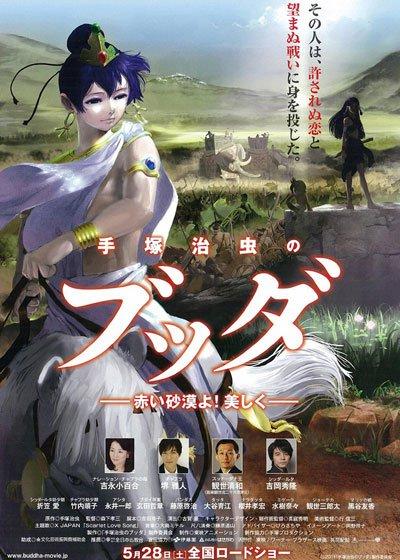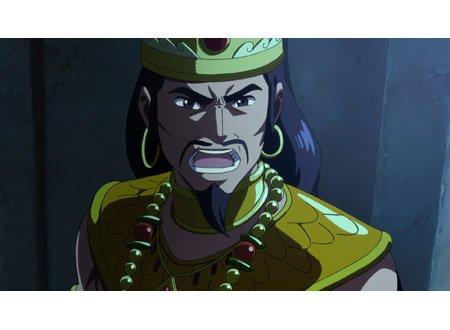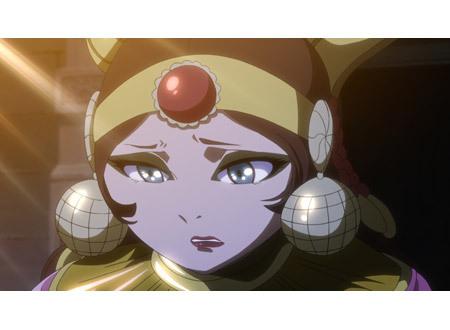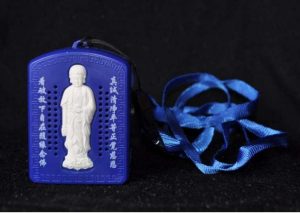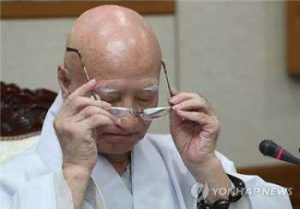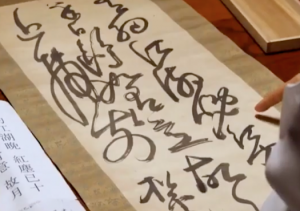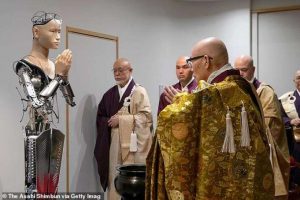Original Author: Osamu Tezuka
Director: Kozo Morishita
Studio: Toei Animation
Distributed by: Warner Bros. Pictures and Toei Animation
Release date: 28/05/2011
As far as I know, there have been no animated films to begin with that enjoy the same financial backing and sheer effort as Osamu Tezuka’s “Buddha”, which will be presented in three instalments. “The Great Departure” is the first movie in this manga-to-silver screen trilogy, which I watched in Amsterdam on the first night of the sixth Buddhist Film Festival Europe (1 – 3 October 2011). It is a visually sumptuous and artistically awe-inspiring film, with intriguing reinterpretations and some regrettable omissions that differ from both its manga original and the canonical accounts of the Buddha’s early life. It offers sprawling, scenic panoramas of northern India and the Himalayas, and a gritty and gory panorama of war, violent deaths and eviscerated corpses. It utilizes the latest in animation to show off the miracles of young Siddhartha, from the opening where the bodhisattva hare throws its own body into the fire to the white, six-tusked elephant that enters the stunningly drawn Queen M?y?.
Featuring an all-star voice actor cast, including Nana Mizuki as Siddhartha’s lover and the twenty-sixth Grandmaster of the Kanze School of Noh and Kyogen as the Buddha’s father, “The Great Departure” falls short in certain areas, but remains an incredible animated epic that will further propel the ineffable figure of the Buddha into Western and Japanese pop culture. Easily my favourite animated film so far, I very much look forward to welcoming the next two movies of the trilogy.
The title of the movie should render my need to provide a synopsis moot, but the title omits the several central characters, many of who are Tezuka’s original creations and not present in the Buddhist s?tras. They are: the slave Chapra and his mother, child telepath Tata, bloodthirsty warrior Bandhaka, ill-fated ascetic Naradatta, and Siddhartha’s low-caste lover, Migaila. These characters help to shape a movie that addresses not only the Buddha’s early life, but also the intersectional injustices of the caste system that wreak injustice upon the sudras while condemning those of the k?atriya (warrior or aristocratic) class to institutional oppression. The main message of the movie is that everyone – be they Prince, pauper, warrior, or commoner – loses in the caste system.
?uddhodhana, King of the ??kyas
Ruling from his throne in Kapilavastu, ?uddhodhana is the king of the ??kya clan and the ruler who needs to defend his realm from the encroaching kingdom of Kosala, whose leaders are hungry for Kapilavastu’s abundant natural resources. Despite being voiced by Kiyokazu Kanze, the current Grandmaster of the Kanze School of Noh and Kyogen, ?uddhodhana’s character is one of the more disappointing ones. He is one-dimensional, simplistic, and rather shallower than his portrayal in both the manga original
and canon. He is the quintessential domineering father in this film, with the entire superstructure of the k?atriya caste behind him as he tries to force Siddhartha to “behave more like a king.”
He does show a tender side when it comes to Queen M?y?, but it is quite probable that her death gradually makes him forget the gentler aspects of his personality. He dominates and bullies Siddhartha in a blatant and crass manner, most starkly in how he makes an example of Migaila, promising not to execute her only if Siddhartha will marry Yasodhar?. Siddhartha’s departure as an adult strangely does not seem to affect ?uddhodhana, whereas both the scriptures and manga make it clear that he is devastated and forever changed by his defeat at the hands of his son’s resolve. I am more of the opinion, however, that the director simply ran out of time or omitted the manga scene altogether because as a cartoon the film is impressively long, and in an adaptation there will inevitably be some segments left out.
Siddhartha Gautama
Siddhartha is, of course, the central character in this film. The story jumps briskly from his birth, to his being ten years old, then fifteen, before reaching his adult years when he finally chooses the renouncer’s path. His birth is a miracle, with the ??kya clansmen guided by all the animals to attend to Queen M?y? (the sage’s prediction that Siddhartha will either be a universal leader or religious leader is omitted, however, and the sage simply declares he will be amazing). As he grows up, the ten-year old Prince can barely pretend to enjoy his voluptuous, jingling dancing girls (the manga is more liberal in its depictions of palace decadence, but here it is all condensed into one scene).
In the face of his authoritarian father and a merciless royal institution, and various heartbreaking events, Siddhartha realizes the futility of the worldly life and decides to renounce the world. The anime omits his famous farewell to Yasodhar? (at whom he struggles not to look back when he flees), replacing it with a brief goodbye scene with his sleeping father. The film also omits a good chunk of his relationship to his charioteer Channa, who makes his real appearance only at the very end of the movie, and even then Channa does not get the canonical honour of helping Siddhartha sneak out of Kapilavastu with the steed Kandhaka. He simply appears to take the Prince’s clothes and locks of hair. Much of Channa’s importance is transferred to Migaila, Siddhartha’s lover.
Like many protagonists in contemporary Japanese animation, Siddhartha is drawn in the typical, exaggerated bishounen style of beautiful boys. He wears dark blue mascara from his childhood to his teens, and looks just as youthful by his late twenties, except with some stubble. Many of the canonical tropes in his life are changed. For example, his famous “first meditation” occurs not at a festival (where he notices the deaths of the worms in the ground, the pain of the oxen and the labour of the farmers), but on a hunting trip with his friends. The scene retains the profundity of his “first realization” but ends with a gruesome accident in which one of said friends, Jothika, is caught in a pool of mud and swallowed up, disappearing and dying.
Graphic deaths and universal violence plague the compassionate prince throughout his life. For all his greatness and loving heart, his spiritual hunger is left unsatisfied by everyone around him: his Brahmin teacher, his ministers, his evil mentor Bandhaka, and his family. It is only his lover Migaila who can provide him the insights that he desires, and at one point he outright asks her to show him what the real world is like. But when they lose each other, he has no choice but to live meaninglessly until many years later, when he finally has another revelation while meditating and decides to renounce his life with Yasodhar?. His final appearance after cutting his hair and discarding his robes is that of a handsome wanderer, setting off on his new journey to end the perpetual suffering he has witnessed around him.
Yasodhar?
The canonically two most important women in Siddhartha’s life are his foster mother, Mah?paj?pati (M?y?’s sister and another wife of ?uddhodhana’s) and wife, Yasodhar?. But they play a disappointingly small role in this adaptation. Paj?pati has little notable personality, and it is hard for first-time viewers to identify with the woman who is destined to found the nuns’ order. To make matters worse, Yasodhar?’s hairdo and earrings seem to have been drawn by an artist with an overactive imagination, and she is a far cry from her powerful personality in the manga original or A?vaghosa’s Sanskrit classic Buddhacarita.
It is perhaps due to his loss of Migaila that the Prince shows no personal interest in Yasodhar? except the duty to provide a male heir, who is named R?hula (it probably says something about not only a man’s spiritual ideals, but also his wife and family, when he calls his one and only son by the name of “fetter”).
The Buddha’s opinion of his wife has been interpreted in a spectrum of different ways within the Buddhist tradition itself, from ascetic dislike and contempt to tender love over many lives). Yasodhar? has a much more complicated personality in Tezuka’s original manga: she is saddened that Siddhartha gives her a child only out of a sense of duty. She weeps angrily upon receiving her husband’s locks of hair, but remains vehemently loyal and a fierce defender of his interests. She also exhibits a strong opinion that her husband (who never actually divorced her) should come to her and acknowledge her after so many years of abandoning her and their son. Finally, in the canonical account and the manga she joins the Buddhist Order that her lord founds. Only the sequels to this trilogy will tell if the animation is faithful to her future.
Original characters


